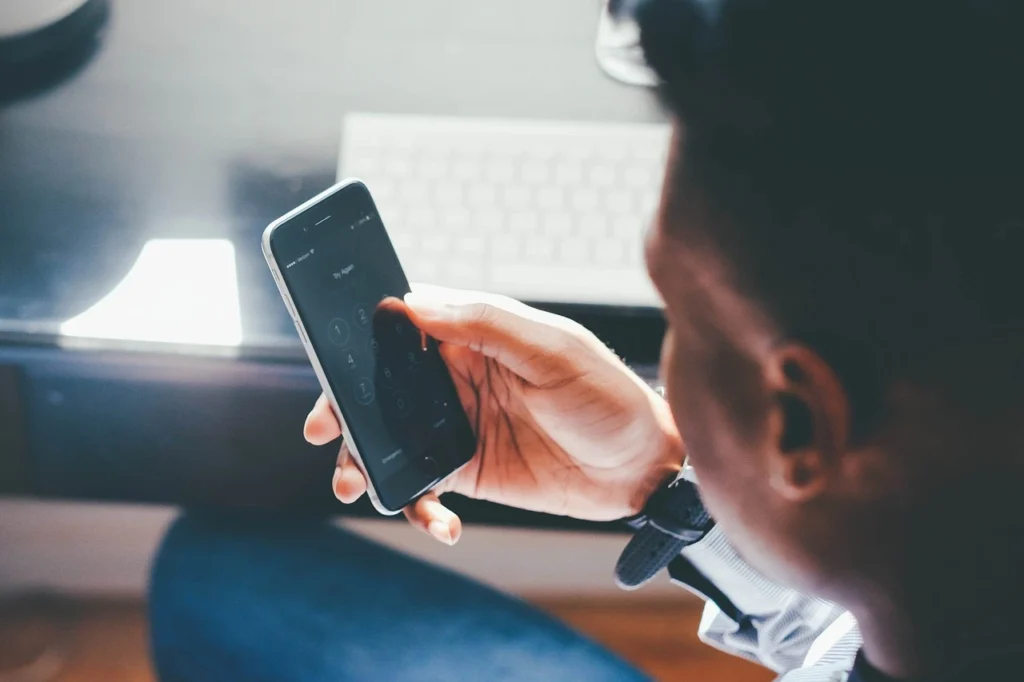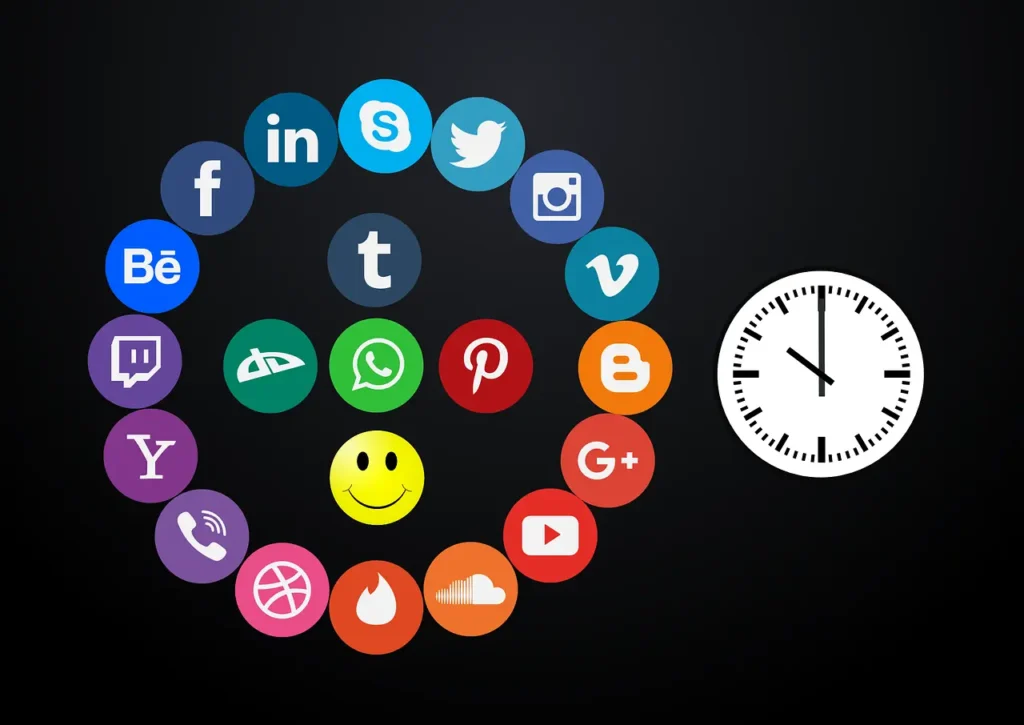The blog will discuss in detail the advantages and disadvantages of social media for students with practical tips to balance young learners’ lives more towards focused, healthier, and balanced digital lifestyles.
Social media is no longer an auxiliary tool for fostering relationships among students in today’s hyper-digital classroom; rather, it has evolved into a way of life.
With an over-reliance on technology, students have enough opportunity to build or nurture relationships, network, and share in between schedule breaks, from accessing study materials to participating in webinars.
As a result, students’ quick academic success and their brilliant student lives go hand in hand.
There is no denying that social media may help students learn, be more creative, and produce much better work, however, there are also some drawbacks to consider., such as stress, diversions, and social media addiction.
These boundaries become remarkably blurry, and suddenly, one finds oneself on the other side. This negative aspect impacts mental well-being and reduces effectiveness in studying.
According to the report on Wikipedia, most of the social media users, especially students faces huge problems, like anxiety, depression, restlessness, and increasing in their food intake.
Hundreds of students have shared their experiences when they became negligent and transitioned to more mindful usage of social media which saw their reduced screen time.
The crux? Social media is neither good nor bad – it depends on how well, on how intentionally, it’s used. So let’s get started.
The Positive Side: What are the Advantages of Social Media

“Intentional use makes social media a source of distraction to students. This becomes such a great educational ally. It opens doors to exposure and meaningful connections as well as learning opportunities that go far beyond classroom walls.
From following thought leaders and educators to accessing real-time academic discussions, online workshops, and peer networks, social media becomes a dynamic platform for intellectual growth and career readiness – provided it is approached mindfully.”
Below are some of the widely known advantages and disadvantages of social media for students pointers listed.
1. Access to Academic Resources
Students may benefit from social media by turning their newsfeed into a stream of instructional capability, in addition to maintaining a healthy follow list. Students may frequently discover explanations of certain ideas, visual aids, tutorials, and review techniques to utilise in addition to the books on websites like YouTube, which are crowded with instructors, explainer videos, and test preparation materials.
2. Joining Supportive Communities
Social media allows students to connect with peers who share similar goals. Online study groups on Telegram or Discord, and forums like Reddit’s r/Ask Academia or Quora threads on exam strategies, create a sense of community. These groups promote peer learning, idea exchange, and moral support, especially during high-stress times.
3. Stay informed and updated.
Social media keeps students updated about internship openings, college events, scholarship announcements, and educational webinars. When formulated wisely, their feed can act as a live bulletin board for career and academic opportunities.
4. Personal Branding and Portfolio Building
LinkedIn Medium, and even Instagram, are now the new places where students who have already made strides can show what they’ve accomplished. Artworks, blog posts, coding projects, research abstracts, debate clips: whatever it is, original content publication propels the student to create a public portfolio and a face for professional presentation.
5. Affordable, on-the-Go Learning
They can study at home and gain access to free and low-cost learning through Instagram reels by educators, YouTube lectures, or open platforms like Swayam, Khan Academy, and Coursera. Micro-content and short videos make knowledge accessible even in short study breaks.
6. Smart Networking
Connecting with alumni, mentors, and industry professionals has never been easier. Students now engage through meaningful comments, questions, or collaborative projects, leading to internships, career guidance, and professional exposure instead of massive following.
7. Improved Digital Literacy.
Social media users who actively engage in critical postings tend to comprehend how algorithms operate, know how to validate information and know how to effectively convey their content. In the modern world, maintaining a digital presence is essential for both one’s academic and professional life.
The Negative Side: What are the Disadvantages of Social Media
Misuse, overuse, or addictive use of social media can hurt a student’s academic life, mental status, and personal growth. Below are some of the most common pros and cons of social media.
1. Mental Health Issues
Students’ lives are negatively affected when they compare themselves to the curated and often misleading portrayals they see online. This can lead to pressure to achieve high grades and may result in feelings of inadequacy, anxiety, or low self-esteem. Such comparisons distort their understanding of reality and long-term success.
2. Misinformation and Fake News
The haste to share or consume material rapidly leads to some students falling for very viral blogs that make unsupported claims about their academic, political, or health. This is especially risky when judgements are based on inaccurate information from unreliable sources. This is particularly dangerous when decisions rely on bad information from unverified sources.
3. Distractions and Time Drain
Addictive social media. One of the greatest liabilities of social media is that a five-minute scroll can easily stretch out to an hour, chewing into study time, class attention, and revision hours. Distractions created affect concentration and productivity greatly.
4. Privacy and Security Risks.
Students post personal activities, maybe location shots, or achievements without realising the footprints they are creating in the digital space. Over-sharing could also lead to exposure to risks like identity theft, stalking, or cyber scams.
5. Addictive and Stereotypic Use
That constitutes one of the important uses of social media that students view as “relaxing”, whether bored, upset, or procrastinating. Doing this makes it more suspect for dependency, whereby they pick up the phone unconsciously while sitting down for a meal or in a lecture.
6. Cyberbullying and Online Harassment
Some offending students find trolling, shaming, or some incidental competitive behaviour in online spaces. Negative comments, exclusion, or aggressive passive behaviour online will adversely affect such students’ emotional and self-image development.
7. Unrealistic Expectations and Peer Pressure
Social media glorifies a hustle culture, “glow-ups”, and material success. Such content leads students to believe they’re falling behind, resulting in unhealthy comparisons and eventual burnout.
8. Emotional Isolation due to Digital Connection
Ironically, spending too much time online decreases real-time interaction with people. Students may have plenty of likes and comments but still feel lonely. Real human connection, as research has shown, requires much more depth than can often be achieved online.
9. Disruption of Sleep
Students have made late-night scrolling a habit. This leads to poor sleep quality and weariness during the day’s toil. In the long haul, it disrupts the cycles of sleep and cognitive functioning.
10. Poor Digital Reputation
Old tweets, controversial memes, or impulsive posts may haunt students when capturing their attention – they may prove fatal for admissions to colleges, during job placements, or at internship applications.
It is not easy to clean up a digital presence nowadays; hence, there is much more effort to ensure proper online activity.
How Students Can Maintain a Healthy Digital Life?

- A healthy relationship with social media should call for conscious habits and not total rejection. Here are some patterns that students can follow:
- Set a daily screen time limit using digital well-being apps, such as Digital Wellbeing or iOS Screen Time.
- Unfollow non-purposive accounts and follow creators who make educating or motivational types of content.
- Do not watch screens before sleeping, but plan journaling time or reading to replace that habit.
- Think twice about the post: If you wouldn’t want your teacher or employer to see it, don’t post it.
- Use your social platform actively – comment, share, create; don’t just scroll.
- Fact-check before you share information. Verified sources, and cross-referenced if needed.
- Finally, bring an offline presence in sizable measure. Spend time with family, friends, and nature.
Conclusion: Advantages and Disadvantages of Social Media for Students
Social media is no enemy; it’s merely an environment. Like any environment, it has to be navigated by students – there should be awareness, boundaries, and a sense of purpose.
The end goal should not be to stop using social media completely but to redefine its place in a student’s academic life. When done properly, it becomes a source of learning, reaching out to others, and opportunity.
When done otherwise, it becomes a trap of comparison, distraction, and stress. It should not sabotage students’ growth either academically or emotionally.
The sharp divide between a student world and a student’s online existence results in those doing digital wellness not standing out just by grades but also by high clarity, calmness, and confidence.
Frequently Asked Questions Regarding Advantages and Disadvantages of Social Media for Students?
Below are the answers of the most asked queries on the internet regarding, advantages and disadvantages of social media for students and also the pros and cons of social media.
Q1. How does social media affect student performance?
It helps pupils study, it supplies them with community support and instructional information. Disorienting attention, sleep, and emotional stability, however, might occasionally result in a fallout that has a detrimental impact on academic performance.
Q2. How do we make social media productive for students?
Following academic creators, using digital tools for learning, establishing screen limits, and engaging intentionally rather than passively.
Q3. Should students take breaks from social media?
Yes, even shorter digital detoxes can help readers reset their habits, gain concentration, and find mental clarity again but this doesn’t mean that you have to stop using social media forever.

One Response